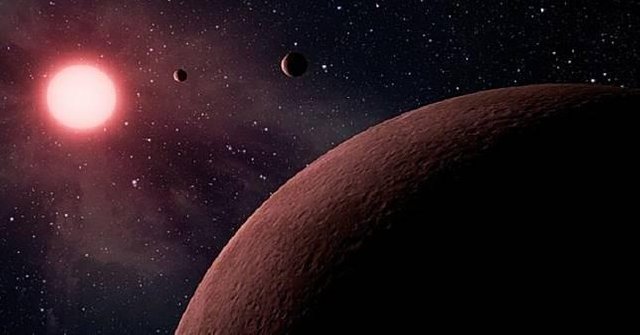NASA : Discover 3 New Exoplanets, Here's the Explanation!

US space agency (US) NASA again found a new exoplanet. The new exoplanet was discovered by NASA through a Kepler mission known as K2. Kepler itself is the most prolific planet hunter telescope. The spaceship has so far discovered more than 2,300 exoplanets.
After a two-wheel failure reaction in 2013, the mission is returned as K2 for high-precision photometry in selected fields in the ecloptica. Since then, the revived Kepler spacecraft has detected nearly 160 exoplanets. Now, an astronaut team led by Joseph Rodriguez of Harvard-Smithsonian Center for Astrophysics (CfA) in Cambridge, Massachusetts found three new exoplanets from data released by K2.
The Kepler spacecraft observed the star GJ 9827 from December 2016 to March 2017, during Campaign 12. This observation allowed the team to discover that the last K-type dwarf star nearby was orbited by three foreign exoplanets. The planet found is classified as Super Earth because it has a higher mass than the earth, but lower than the gas planet in the solar system.
"In this paper, we present the discovery of three transiting planets orbiting close to the star GJ9827, using data from the K2 mission," write the researchers.
Located approximately 100 light years from Earth, GJ 9827 is a bright star K6V spectral type. This star has a radius of approximately 0.63 solar radii and approximately 15% smaller than the Sun. Scientists suggest that the star is surrounded by three planets named GJ 9827 B, C and D, respectively 0.02, 0.04 and 0.06 AU from the host. According to the paper, GJ 9827 B has a radius of 1.64 Earth radius but its mass can not be ascertained.
Researchers estimate that its mass is likely between .5 and 4.26 Earth masses. With a radius of 1.29 Earth radius and an estimated mass of approximately 2.5 Earth masses, GJ 9827 C is the smallest and less massive planet of the newly discovered trio of exoplanets. The planet has a 774 K equilibrium temperature and an orbital period of 3.65 days.
Meanwhile, GJ 9827 D is approximately twice as big as Earth and at least five times more massive than the human planet. This alien planet has a temperature of 648 K equilibrium and takes 6.2 days to orbit its parent star.
My friend, a kind reminder here.
#cn tag is stand for Chinese.
However, no Chinese was detected in this article.
Please use wisely for your tag,thank you
Thanks for sharing your thought about this topic. upvote by @dante01